tough business:
a parker site
"In my family, everyone was a fan of Westlake": An Exclusive Interview with the Creative Team Behind Parker 1969 - La Proie
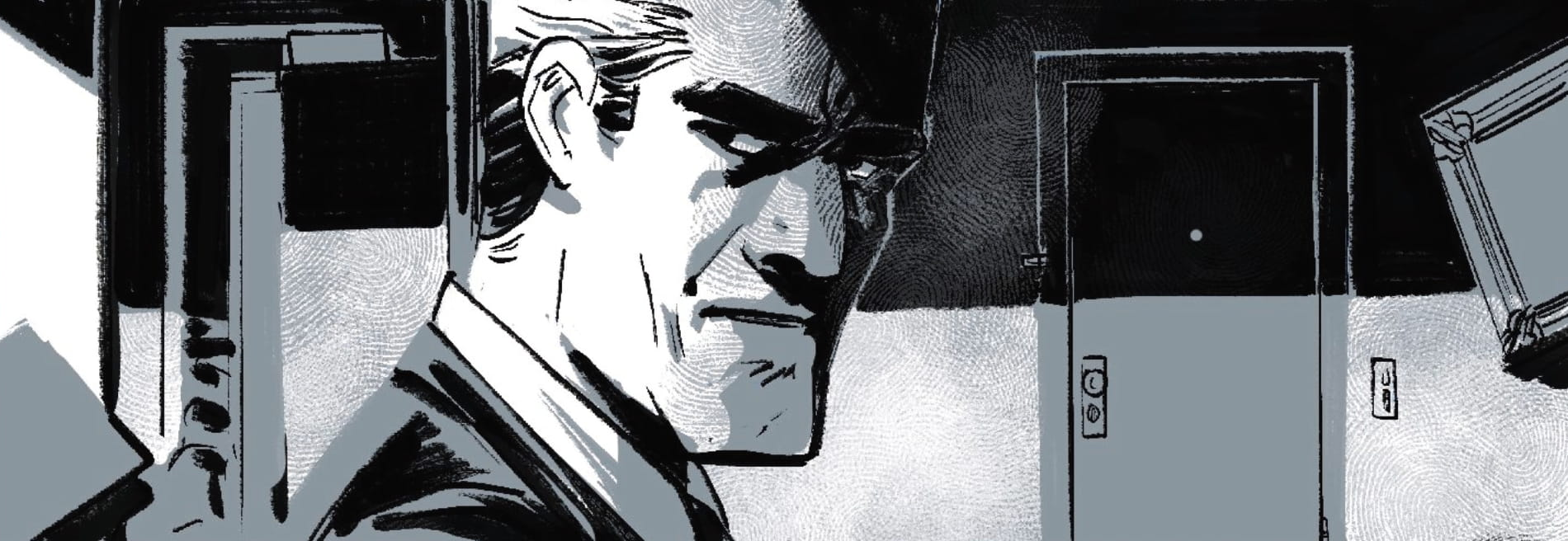
With the first of a whole new series of Parker graphic novel adaptations just around the corner, Tough Business had the distinct pleasure of conducting an exclusive interview with Doug Headline, Kieran, and Olivier Jalabert – the passionate and talented creative team behind Parker 1969 - La Proie.
You'll find below an extensive look at the hard work going on behind the scenes of the upcoming book, its origins and a surprising connection to Donald Westlake himself.
1) How did you discover the Parker novels, and what drew you to them?
Doug Headline: I read the entire first series of Parker novels around the age of ten, in the early 1970s, as some of them were just coming out in French. Also, I was reading all of the other Donald Westlake novels that were being published under the French imprint Série Noire. In my family, everyone was a fan of Westlake, Parker and Dortmunder. Then my father [Jean-Patrick Manchette], also a famed noir writer himself, wrote to Don with the idea of turning one of his more personal novels, Adios, Scheherazade, into a stage play. They corresponded and talked about it for several years, but it was a complicated proposition, and in the end it didn't materialize. But once they were in touch, they continued to correspond. My father translated a couple of Don's books, Ordo, then Kahawa, and wrote lengthy pieces about the Westlake/Stark canon and Don's parallel identities in his monthly chronicles about crime fiction. They finally met in person in Spain in 1988, at a crime fiction book fair. Later on I translated another one of Don's novels, Put A Lid On It, and got to meet with Don and Abby Westlake a few times in the 1990s.
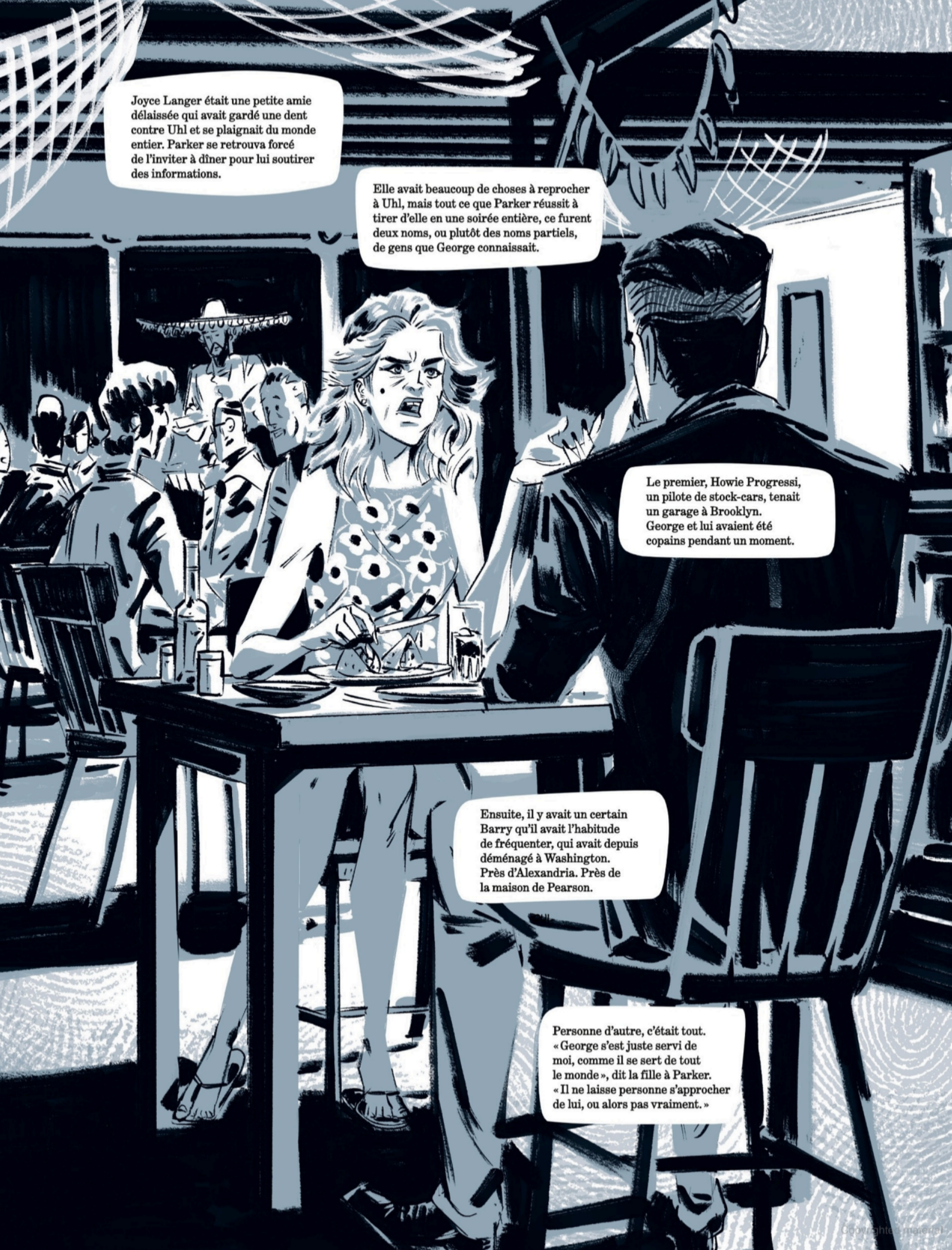
After Don's death in 2008, and then Darwyn Cooke's in 2016, no more Stark/Westlake graphic adaptations came out. When I served as editor to a complete collection of Darwyn's adaptations of Parker in 2020 for French publisher Dargaud, it came to my mind I should go to Abby Westlake and suggest new graphic adaptations of Don's novels. Abby liked the idea, I showed her some samples by artists I thought could work with the material, she graciously gave me her blessing and off we went. I felt very grateful and very blessed indeed.
Kieran: For my part, I discovered the Stark novels thanks to Darwyn Cooke's work. After seeing and loving the movie Payback with Mel Gibson, I very quickly became a fan of Parker's rough character.
Olivier Jalabert: I actually saw the John Boorman adaptation of Parker, Point Blank, with Lee Marvin as the title role when I was a kid, but I didn’t know that it was an adaptation of Richard Stark’s character. Later, like Kieran, I saw Payback in NY of all places, and I realized that Mel Gibson’s Porter role was actually… Parker! Then, of course, years later, I devoured Darwyn Cooke’s adaptations – true masterpieces. As for the novels, I must confess that I only started reading them when joining Doug and Kieran on the Dupuis/Aire Noire team as co-editor of the noir line with Doug.
2) I imagine some of the visual inspiration comes from Darwyn Cooke's comics -- the palette of the preview pages certainly brings to mind the graphic novels published by IDW -- but of course, France has its own noir conventions and the Richard Stark series was famously published under the Série noire imprint by Gallimard. Can you talk a little bit about your approach to this adaptation and any inspirations behind it?
K: No doubt it was the graphic uniqueness of Cooke's work that immediately got me hooked. First of all, it was his kinship with Bruce Timm's style and line work – as he had extensively worked with Bruce on the Batman cartoon in the 1990s – that won me over. The minimalist 1960's aesthetic, the striking page breaks…
But above all, that silent introductory scene in the first book, showing Parker's return from beyond the grave. It's one of the books and scenes I've reread the most often since I started doing comics over 15 years ago.
It's not an easy task to follow in Cooke's footsteps, and that's exactly what I wanted to avoid doing: being a copycat, a follower (since he had already captured and digested a bit of Bruce Timm's style himself). I preferred to try and find my own way by search-and-error, incorporating some of the hallmarks of his style: the two-color process, the open lines in his artwork, and pushing the graphic novel aspects to the max.
As for the rest of my graphic influences, I was never drawn to the French-Belgian comics culture, but attracted instead to mostly non-European references, and also much more to black and white art. When I was younger, I started reading comics with Frank Miller's Sin City, Mike Mignola's Hellboy and Domu by Katsuhiro Otomo, but also Sergio Toppi and Mort Cinder by Alberto Breccia.
It may sound strange but I'm not a reader of novels, rather I'm a big fan of movies, and more recent ones than the movies Doug enjoys! I eat up films and crime thriller TV series with great pleasure. In fact, Doug made me a selection of 1950s must-see Noir films, which I'm now watching in preparation for the upcoming Parker sequel.
DH: Darwyn Cooke, yes, of course, we're both huge fans of his work. We wanted to do something that other fans like us could enjoy, without imitating him, but keeping in mind the way he had so successfully recreated the whole atmosphere and look of the era. In that respect, our first book's title is a nod to his first work on Parker, The Hunter, as we did name our book The Hunted [La Proie’s English-language title]. That brings us full circle and marks kind of a new departure for these adaptations.
Other major influences on my side include the great EC comics, most of all Crime Suspenstories and Shock Suspenstories, the great film noirs of the 1950s-60s (Kubrick's The Killing, Bogart's The Enforcer, On Dangerous Ground, Asphalt Jungle, Sweet Smell of Success, etc.), Lee Marvin's impeccable figure in Don Siegel's The Killers and Boorman's Point of No Return. And the whole imaginary urban universe in which most Noir fiction takes place.
OJ: They said it! We are aligned with Cooke’s vision but Doug and Kieran made the mythology their own, with respect to the material developed by Cooke without copying any of it.

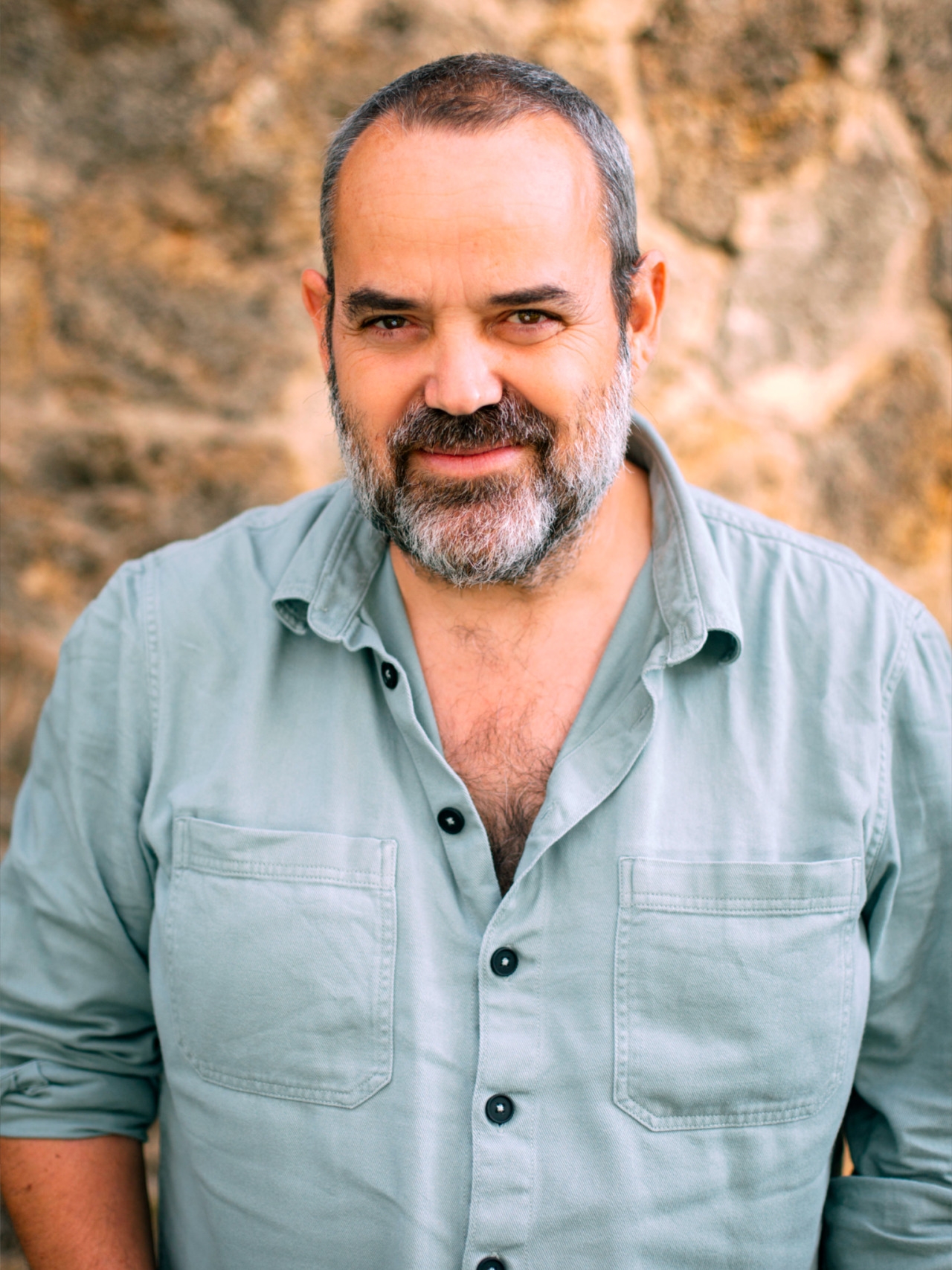
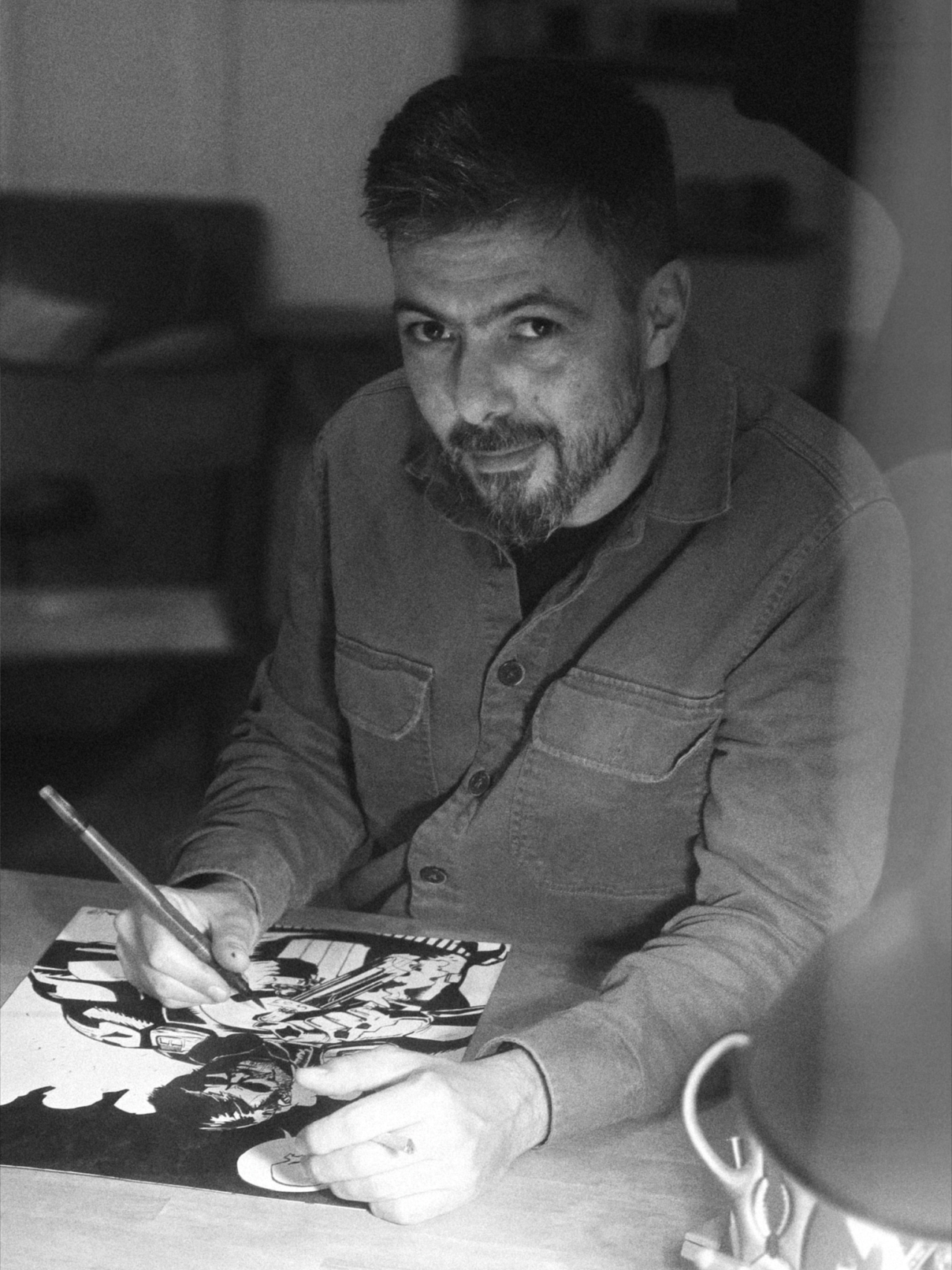
3) Similarly, is this meant to jumpstart a whole series of Parker adaptations? Do you already have a clear idea of how many of the novels you'd like to do?
DH: We are all set to do, respecting the order of their publication, the last three books of the first Parker period 1962-1974 that follow this one, i.e. Deadly Edge, Plunder Squad and Butcher's Moon – a kind of giant send-off to that first era. And then who knows, we might pick up with Comeback and the whole second Parker “season” Don created from 1997-2008. But if all goes well, why not also back to some of the older, unadapted novels? There's still so much untapped Parker material around. We hope to do at least five graphic novels, in any case.
4) On a personal note, The Sour Lemon Score is one of my favorite Parker books and I think by far one of the most significant in the series but it is undeniably something of an odd one out in many ways. To put it plainly, why choose Sour Lemon specifically?
DH: We started with this one because we did not want to be re-doing adaptations of the novels already adapted by Darwyn Cooke. With the exception of the later Slayground (aka Fun Island), Darwyn has adapted a lot of the first few books in the series, stopping with The Seventh. Stark's follow-ups to that novel were a trio of slightly “lighter” Parker novels: The Rare Coin score, The Green Eagle Score, The Black Ice Score. But we wanted to hit base with our first album, so we chose the next book, 1969's The Sour Lemon Score, because it's a really dark, hard-as-nails Parker, which eschews the classic structure of Stark's novels, in which a heist is prepared and executed at some length, then something goes wrong and the rest of the plot follows. Here, the robbery is dispatched in the first few pages and then the whole story revolves around Parker's frantic hunt for the heist money and the traitor who has taken off with it. As the whole book is a long chase, there are also a lot of different locations, different settings and atmosphere, and a lot of secondary characters, both men and women, so it was a graphically interesting story to take on. Perfect for a first job!
5) Westlake's work on the book is hard-hitting, complex and quite daring. Do you think the LGBT themes of The Sour Lemon Score will resonate with a wider audience now?
K: That is an interesting question, and to tell you the truth, I find Westlake's treatment of the characters here very intelligent, much smarter than it might be today: everything about them is handed out to us as plain fact, and there's no need to ponder it or pass any judgment on them. That's the way they are, period, that's it.
DH: The description of all relationships between the characters in this book is pretty dark. No one is happy, everyone is alienated. None of the characters, none of their personal relationships, or the way they live, are presented in a positive way. The relationship of the gay couple, Matt and Paul, who are easily the worst villains in the story, is shown as a rather brutal relationship with a clear domination pattern. The well-adjusted family life of the Saugherty couple and their children is an illusion, as they really don't get along and live in perpetual frustration. The womanizer George systematically betrays his girlfriends, dropping them every time after victimizing them. And the secondary female characters, such as Madge, Joyce, Grace Weiss, or the antique dealer, all suffer from loneliness. In the end, it's only Parker, who functions as a totally independent, on-his-own, autonomous character and needs no one to lean on, who comes out as straightforward.
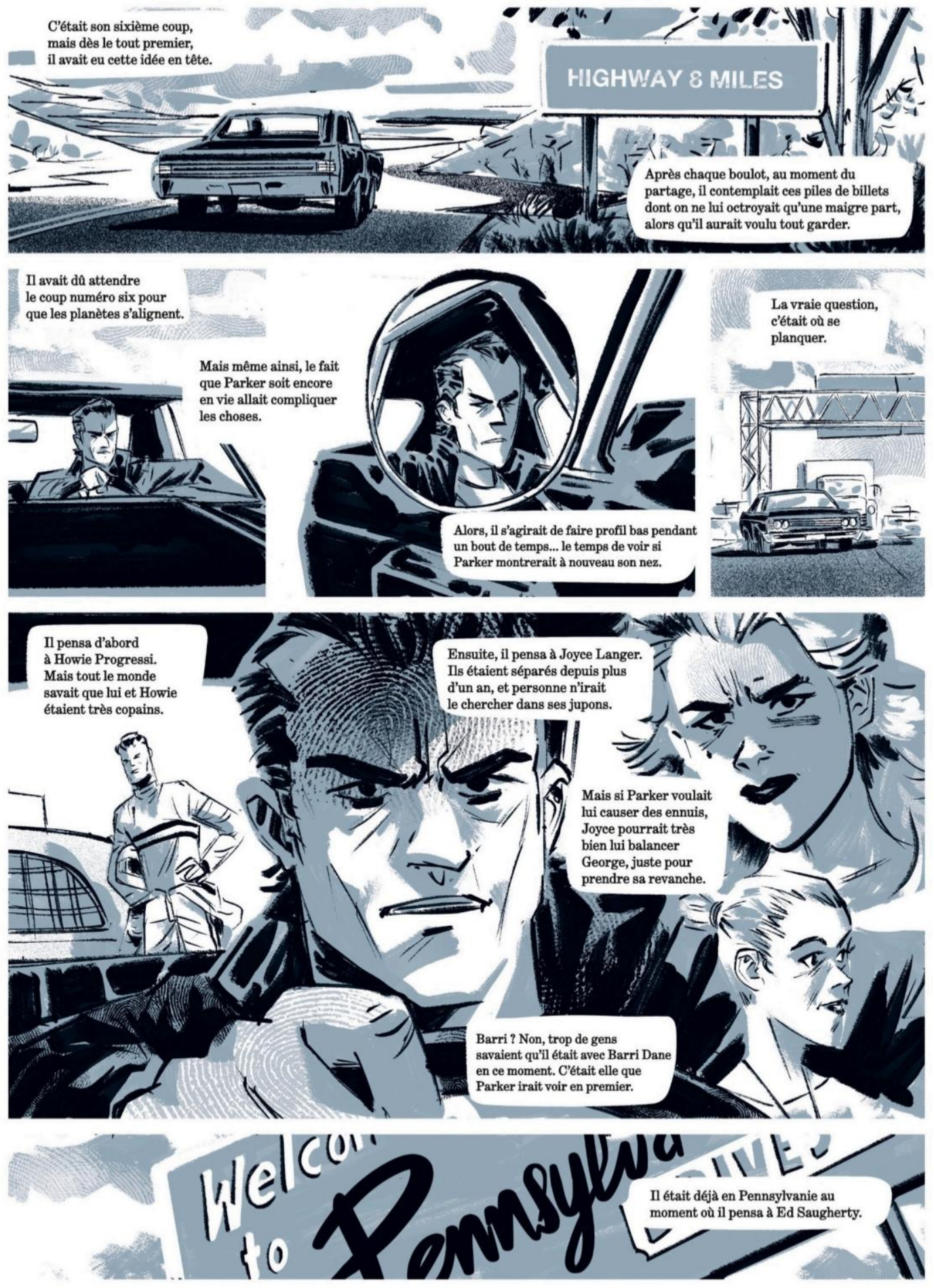
6) Would you say it's a relatively straightforward adaptation or have you found it necessary to add or omit certain things over the course of the project? An example would be something along the lines of how Alan Grofield shows up in Darwyn Cooke's The Outfit despite not appearing in the original novel.
DH: We deliberately stayed very close to the novel, keeping everything in and leaving no important sequences out, just the occasional bit of descriptive text or character psychology, because we had to keep the story moving fast. This novel was already full enough with characters and events that we didn't need to add any more elements that weren't there. I think we'll continue to stay as close as possible to Stark's novels in the future. He's the master storyteller, the oh-so-clever clockmaker we can look up to every time.
K: Well, as the story is already very dense in terms of travels, places and characters, and it keeps moving on almost without ever stopping, we couldn't cut out much. Not even the dozens of scenes and panels in which our characters spend time talking over the phone!
7) Could you talk about the creative process behind the book? I saw some glimpses of art on Kieran's Instagram where it looked like the dialogue was in English -- do you work straight from the novel or from a finished script in French, or some combination of the two?
K: The work was done in several phases. First, when Doug asked me to take over the series with him, I started drawing on my own, doing some pencil tests, just to see what these characters and settings would look like with my personal graphic touch. It started out as a very rough, storyboard-like thing, with a few character sketches, just to give an idea of what they might look like. But nothing looked really finished or presentable, to my eye. However Doug sent it to Stéphane Beaujean, managing editor of Dupuis editions, without telling me he had done it. So a few days later, I was pleasantly surprised when he told me “Stéphane has given us the greenlight for the book, he thought your art was great...”.
That was before we'd even chosen the novel we were going to adapt, and then we had to do a few tryout pages to put together a presentation for the San Diego Comic Con to show to potential publishing partners. So there's a “prologue” to our Parker somewhere out there.
Then, once the contracts part was settled, Doug began to turn in the script, roughly in four installments, as the novel itself is divided in four parts. We got our page breakdowns and dialogue approved by the Westlake Estate, then we started on the final version of the pages.
So I alternated between storyboarding and inking, page by page, until the book was almost completed. I think the last batch of storyboards was much larger, almost fifty pages, and since my boards were quite detailed, I was able to ink 30 pages or so in the course of July-August 2024. Well, it was a sort of challenge for me, with the goal of releasing the graphic novel on time for the international FIBD [Festival International de la Bande Dessinée] comics fair in Angoulême in January 2025.
8) Will there be any major differences between the new translation and the 1969 one published by Gallimard? Have you found some of the language used in there to have become outdated or is accuracy to the era a priority?
DH: For the graphic novel script, I wrote it in English first, directly using Stark's text and dialogue. Then I translated it myself into French. There was no point going back to the old translation, which was quite outdated. Also there's another serious problem, apart from the “Frenchified” language with its often badly dated slang, which is to be found in most all books of the Série Noire of that period. The problem these translations had was the systematic trimming down of all novels too long to fit into the 250-page-max limitation of a Série Noire book at the time. In that novel's 1969 French edition, some passages have been shortened here and there, and at least one entire chapter has been cut out: the chapter in which Parker waits it out, hiding in the woods from the firemen and police until they leave the crime scene of the burnt-down farm before he can set out for the nearby town and start off chasing George. If I'd worked from the novel as it was originally published by Gallimard instead of the US version, I wouldn't have noticed the cut, and part of the story would have been missing.
9) What will the special/deluxe edition of La Proie include?
K: This is a special 1,111 copies limited edition of the French-language version that will feature a different, original wrap-around dust jacket and a signed frontispiece on art paper; each copy of that edition is signed and numbered by myself. And the luckiest readers/collectors might well find one of 13 pieces of original artwork which I drew on as many copies of this variant edition, and which were scattered among its 1,111 frontispieces.
10) Finally, I understand the graphic novel can be ordered internationally from the publisher's website but is there any possibility of an English translation in the future?
DH & K: Yes, there definitely will be an English-language UK/US release of the book and series (especially as the graphic novel was first written in English). We are currently discussing with several US publishers as there is a lot of interest out there, as could be expected. And several European countries will also be picking it up for release. So hopefully, what we are looking at is more Richard Stark and more Parker, in many countries, for quite some time now.
Parker 1969 - La Proie comes out 21st March 2025, with an English-language release to follow.
Thank you all for sitting down with us and taking the time to dig deep into your creative process & love of all things Richard Stark!